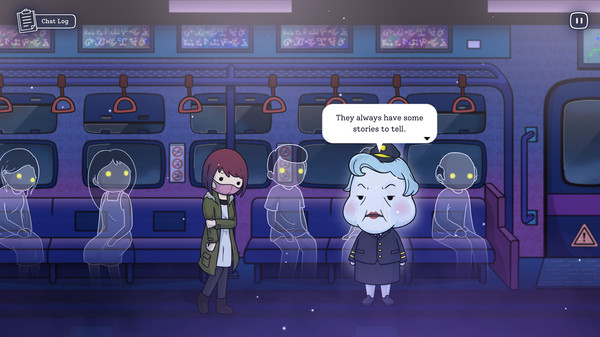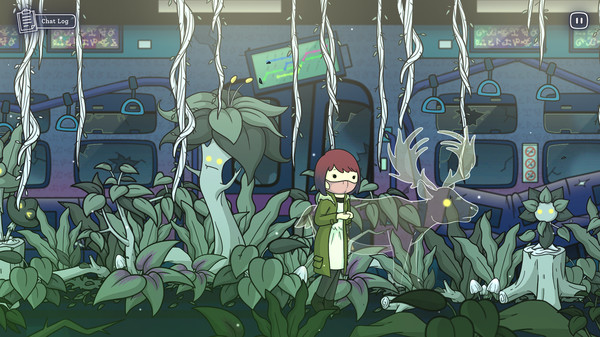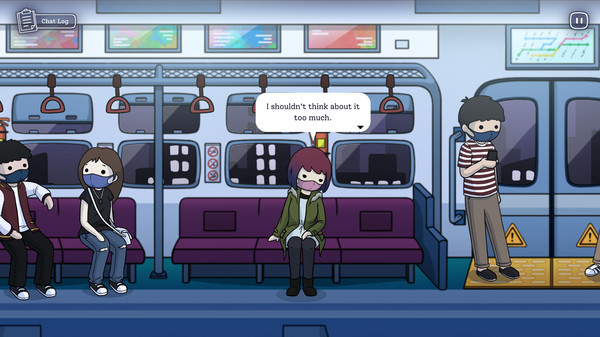
Probably not. But you should still start small.
In my last post I implored those of you who have never released a game to just focus on getting something, anything, out! Work towards small, quick wins. Not every game needs to be a multi-year struggle that causes an existential crisis.
It is ok to release small games.
Today, I want to share with you a story of Mohammad Fahmi who took drastic measures to release What Comes After – a small, but well-received game in 4 months.

The back story
Fahmi was a designer at Toge Studios on the successful visual novel Coffee Talk. After the game’s release, he quit Toge to make a new, more ambitious game named Afterlove EP. Fahmi describes it as a game “with full voice acting similar to Bastion (kind of like the voices in your head) and rhythm minigame (like Night in the Woods).”
After several months though, the new team was stuck creatively and financially. Their solution? “We decided to work on a new game called What Comes After hoping that the profit from the game could be used to develop that bigger game.”
How they stripped it down?
What Comes After is much smaller and Fahmi’s team did some real smart things to get it out.
For starters, What Comes After was built on the codebase for their unfinished Afterlove EP.
There are no mini game bits in What Comes After. The interaction comes from running the main character, Vivi, around a subway train deciding who you want to talk with. The dialog is linear, there are no branching dialog choices to make. What Comes After also only has 5 NPC character designs despite it being set in a crowded subway train.
It sounds strange, but What Comes After actually works. The abstracted art style and the fact that in real life you only remember the basic blurry details like “glasses” “balding” “tall.” Most importantly, the story is the most important thing and it is touching and well paced.

The development team
The total development team was 7 people all working for revenue share. The game had a $600 budget for capsule art, sound mastering, script editing, and applying for Steam direct.
Marketing
The What Comes After Steam page was posted 1 month before launch. Their marketing was almost entirely built upon Twitter.
Fahmis first tweet about the game (which you can see here) included a link to the Steam page with a good, clear call to action. That got the most engagement at 394 link clicks or a 7.1% click-though rate. For Twitter, that is very good.
Fahmi also used the #pitchyagame hashtag to get extra visibility in later tweets (Here it is.) Fahmi said that it got him 96 link clicks or 1.7% click-through rate.
Fahmi also emailed the guy behind the famous CanYouPetTheDog twitter account with a steam key and the game’s launch date. They tweeted it out on launch day (See the tweet here and here). It is hard to tell what the effect of that was because it was launch day and you typically see a lot of traffic to it anyway.
The Launch
At launch, What Comes After had 1200 wishlists and sold at a 20% discount. Fahmi told me that they sold 10% of their wishlists in the first week.
Typically for a bigger game I would advise launching with at least 5000 wishlists. It is really impressive that they got 1200 wishlists in such a short pre-launch run up.
It has been almost 3 months since launch. What Comes After has had a second discount and is still racking up wishlists at a regular pace. If you look at What Comes After’s Follower Chart, you can see this growth. Fahmi told me they have sold 3000 copies of the game.
This is an amazing achievement. Most games never sell this many units. Not only that, but the game has over 145 Very Positive user reviews. Yes, some people say it is short but the story is so well written that people don’t seem to mind.
What is the moral of this story?
While What Comes After is a great story of a team getting a great creative vision out the door, it is not one of financial success.
I am becoming more and more convinced that the small-game-rapid-release strategy is not a viable option. Part of this is because I just don’t think the Steam algorithm is set up to allow for smaller games. When a game like What Comes After is posted on Steam for a 1-month pre-launch buildup, there isn’t enough time to collect a lot of wishlists. Similarly, smaller games have a lower price.
The Steam algorithm is based on income. So the combination of a smaller wishlist base and a lower price just doesn’t make your game look attractive to the algorithm. As a result, bigger games will always be picked instead of the smaller ones for key featuring spots.
I have always entertained a thought that I could systematically release small games every quarter or so and build up a loyal base of fans who would buy everything I put out. After looking at more games like What Comes After and my own 1 Screen Platformer, I don’t think this business model will work.
However, I don’t think the 3+ year indie game development model works either. After about 2 years, the financial risks of trying to recoup the development costs become untenable. Indie games just don’t make that much. Spry Fox designer Daniel Cook once described making games with long development cycles as like trying to forecast the path of a moving target 2 years ahead of time and firing a golden cannonball at it. The game market just moves too fast and too unpredictably.
I am still trying to identify the ideal scope and development time goldilocks zone.

Why I still recommend making small games
Even though I don’t think you can make a living exclusively from rapid-release small games, I still think it is a good practice for studios to occasionally pursue them. There are many benefits outside of raw revenue that comes from a small game.
- Practice – For first-time devs, a small game allows you to practice the release processes. It also teaches you how to simplify a design and have the confidence to make decisions similar to how Fahmi’s team stripped out interactive mini games.
- Research and Development – A small game is a good way to build and test new technology in a marketplace. Fahmi mentioned that the code that was adapted from Afterlove EP is in much better shape after they modified it to release What Comes After.
- Marketing – A short, cheaper game is a great way to introduce your studio to people who have never heard of you. Even if you are not favored by the algorithm, Steam still sends thousands of potential fans to your Steam page every week. You can later market the game to people who bought your small game when it is time to release your big game. If you are spending years working on a game, it is good to have a smaller game available to play during that period.
- Market Validation – Fahmi said that for What Comes After he wanted to test out how audiences would react to music from an indie band from Indonesia with Indonesian lyrics. You can hear the band’s song on the trailer for What Comes After and hear the rest of their music here. I think this creative choice works but it is good that the team tested these assumptions now instead of after years of building their big project. Similarly, if you are making a game with experimental mechanics it would be wise to test it in the marketplace first to see if you should spend more time refining it for your big game.
- Trial run with your team – Making games is stressful and if you are working on a game with lower stakes, you can determine how well your team works together. I have worked on projects where team members realized they just didn’t want to make games and departed after the first project. I was glad they got it out of their system on the small game rather than during a critical project.
- Proof of grit – A delivered project with high quality proves to publishers and Investors that you can ship. What Comes After is a really touching experience. If this team can get this much emotion out of a 1-hour game, I can’t wait to see what they do for a longer project. The team also proved that they have the ability to make smart cost-saving measures that didn’t negatively affect the overall game. Publishers are good at picking up on this skill.
Summary
If you have yet to ship a game because you keep over scoping projects, you must play What Comes After. It is so important to see what a well-executed small game looks like. Study how they made smart decisions to cut scope. Look at what they didn’t compromise on such as a quality story, good visual art, and tiny touches such as the character’s tiny swaying animations and UI sound effects. These are all important things to learn.
Also see that just because your game is short, with “simple” game mechanics you can still produce really affecting art (I felt more playing this game than I did on most AAA million dollar budget games.)
But be aware that your small game probably won’t make a lot but that is ok. In the early stages of your career, it is good to take smaller risks. For more information about this see The Stair Step Approach
You should also check out my other piece on Why you should release small games if you have never shipped before. Also here is the 2018 version of the how to finish a game blog post.
Good luck out there making your game.
Thanks for sharing these insightful articles. It’s quite reassuring to see that small formats, slow starts and humble teams can go places. Practice and perseverance. Also, smart choices and staying informed, by reading insightful articles.